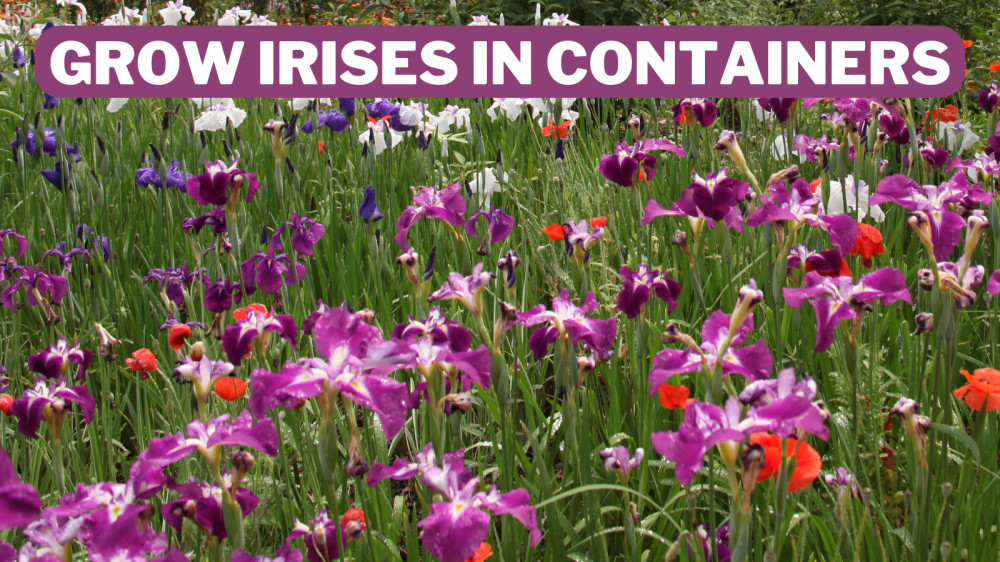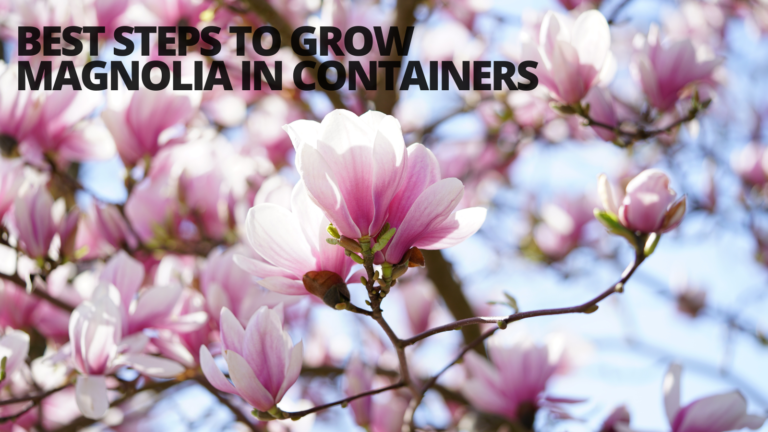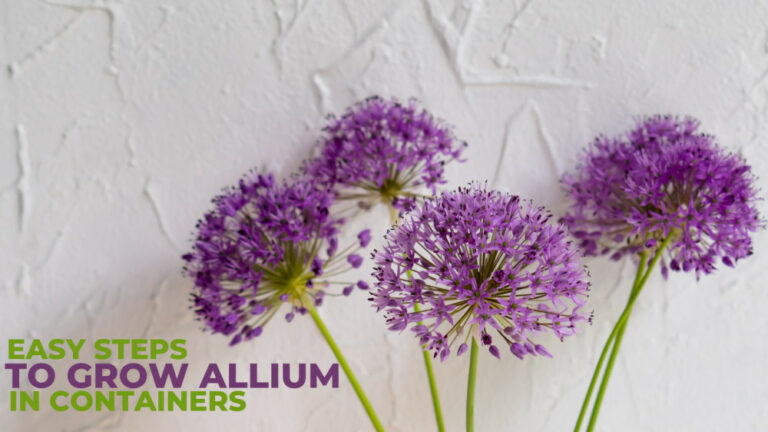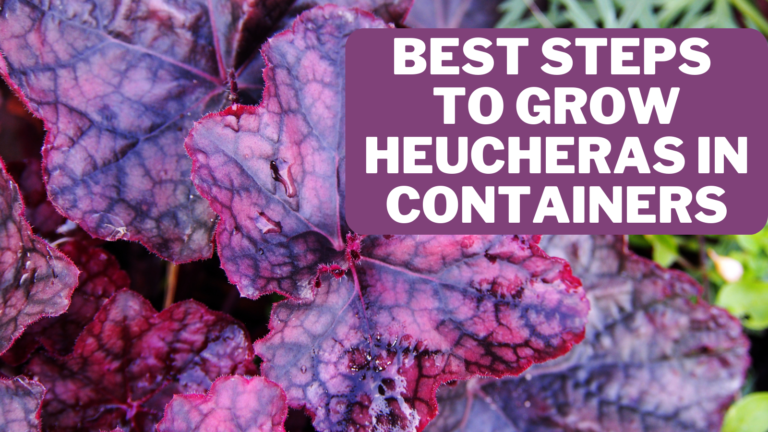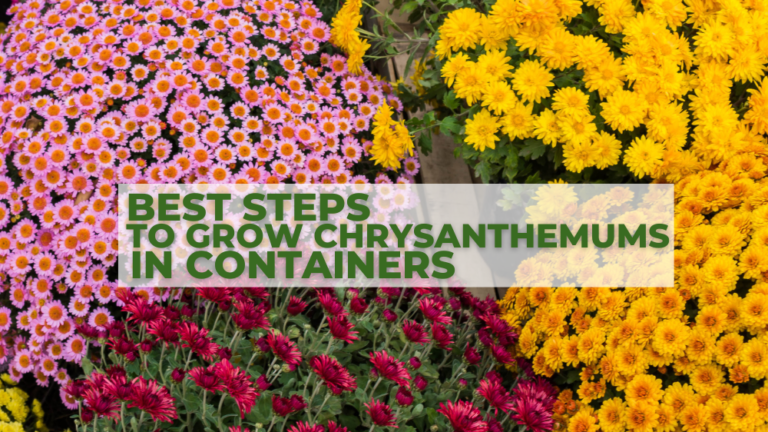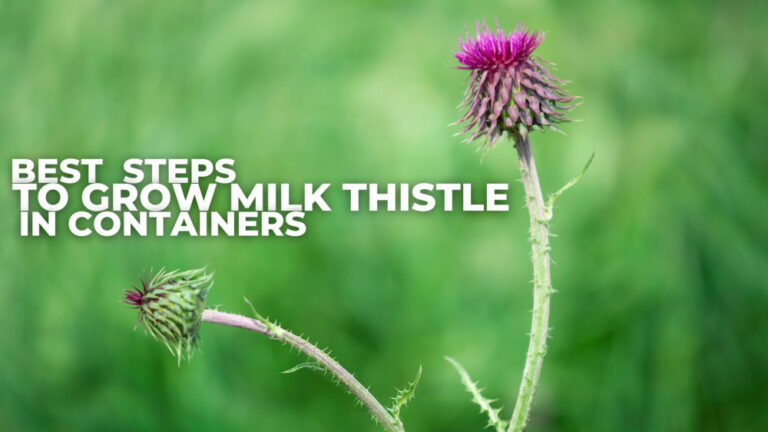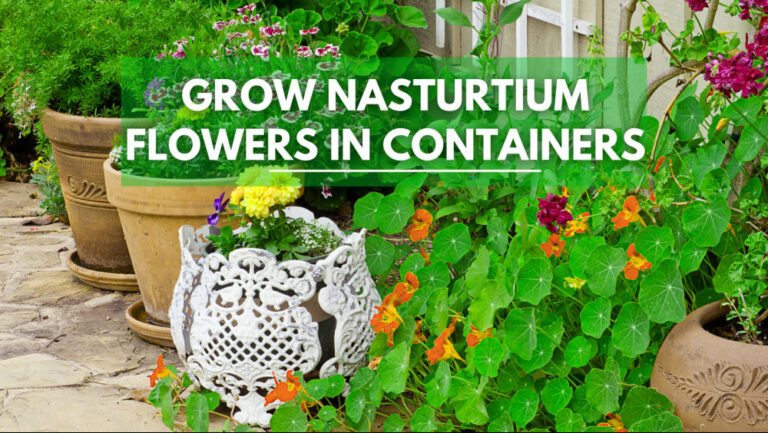Best Steps To Grow Irises In Containers
Best Steps To Grow Irises In Containers
Irises are a stunning addition to landscapes and flowerbeds. Perennial irises are spring-blooming plants that come in various hues and scents. Novice growers and plant collectors favour them due to their distinctive qualities.
The beauty of big iris plants in full bloom is undeniable, but if you're a gardener with limited outdoor space, you'll be happy to know that irises are also well-suited for container culture.

History & Origin Of Irises
The history of the iris flower stretches back to Ancient Greece, and there are still drawings from that period in a few old palaces.
Greek mythology describes Iris as the gods' emissary, a conduit between the heavenly realm and us mortal humans on earth.
Iris was the rainbow goddess, and lovely flowers grew wherever she went. Iris has long been associated with European royalty as a purple or dark blue.
France's official flower is the beautiful iris, sometimes the fleur-de-lis. The fleur-de-lis maintains a special position in New Orleans, Louisiana culture as a remembrance of the French Revolution.
Certain iris flowers have been used medicinally and cosmetically for conditions like dandruff, dry skin, allergies, and rheumatism.
Irises occur in many colours and more than 200 different types. The name “iris” is derived from a Greek word for “rainbow.”
Naturally occurring and on flower farms, these flowers can be found practically anywhere in the world.
Of course, you may also find them in gardens worldwide. Irises are white, yellow, or blue, with blue being the most common colour.
What is the origin of the iris? We can trace its fascinating history back to the time of the Ancient Greeks. Greeks believed that the goddess Iris served as the gods' emissary.
The locals thought she represented the rainbow and served as a bridge connecting earth and heaven.
The Greeks would lay purple irises on the graves of ladies who had passed away to invoke the goddess Iris to assist the deceased in entering heaven.
The iris flower, however, was loved by people other than the Greeks. We know that the Ancient Egyptians also liked irises because of their distinctive appearance. Numerous Egyptian temples have iris paintings that have been uncovered.
Irises are perennial plants that grow from bulbs in drier regions or creeping rhizomes (rhizomatous irises) (bulbous irises).
They feature tall and erect flowering stems that might be hollow or solid, flattened or circular in cross-section, branching, simple, or above.
The rhizomatous species often have 3–10 sword-shaped leaves at the base that develop in large bunches. The bulbous species' 2–10 narrow leaves grow from the bulb.
The Northern Hemisphere's temperate areas, including Europe, Asia, and North America, are home to almost all species.
Despite having a wide biological range, the iris is most frequently found in arid, semi-arid, or extremely cold, rocky mountainous regions.
Grassy slopes, meadows, woodlands, bogs, and riverbanks are other ecosystems. Iris foetidissima grows in forests, hedge banks, and scrubland, while Iris setosa Pall may endure damp (bogs) or dry situations (meadows).
Types Of Irises
The word “iris” is derived from the Greek word for “rainbow,” which is a fitting name for a genus of flowers with such a diverse array of colour combinations.
The genus Iris, a member of the Iridaceae family, contains thousands of cultivars and more than 300 different species of this dazzling blooming plant.
With so many options, you should have no trouble finding an iris variety that will flourish in your garden setting, even in areas with intense heat and dryness.
Gardeners have long prized the iris for its dependable spring performance and durable vitality in the landscape.
Still, it has also long been a useful source of materials for herbal remedies and perfumes. Iris flowers are also lovely to include in arrangements of cut flowers.
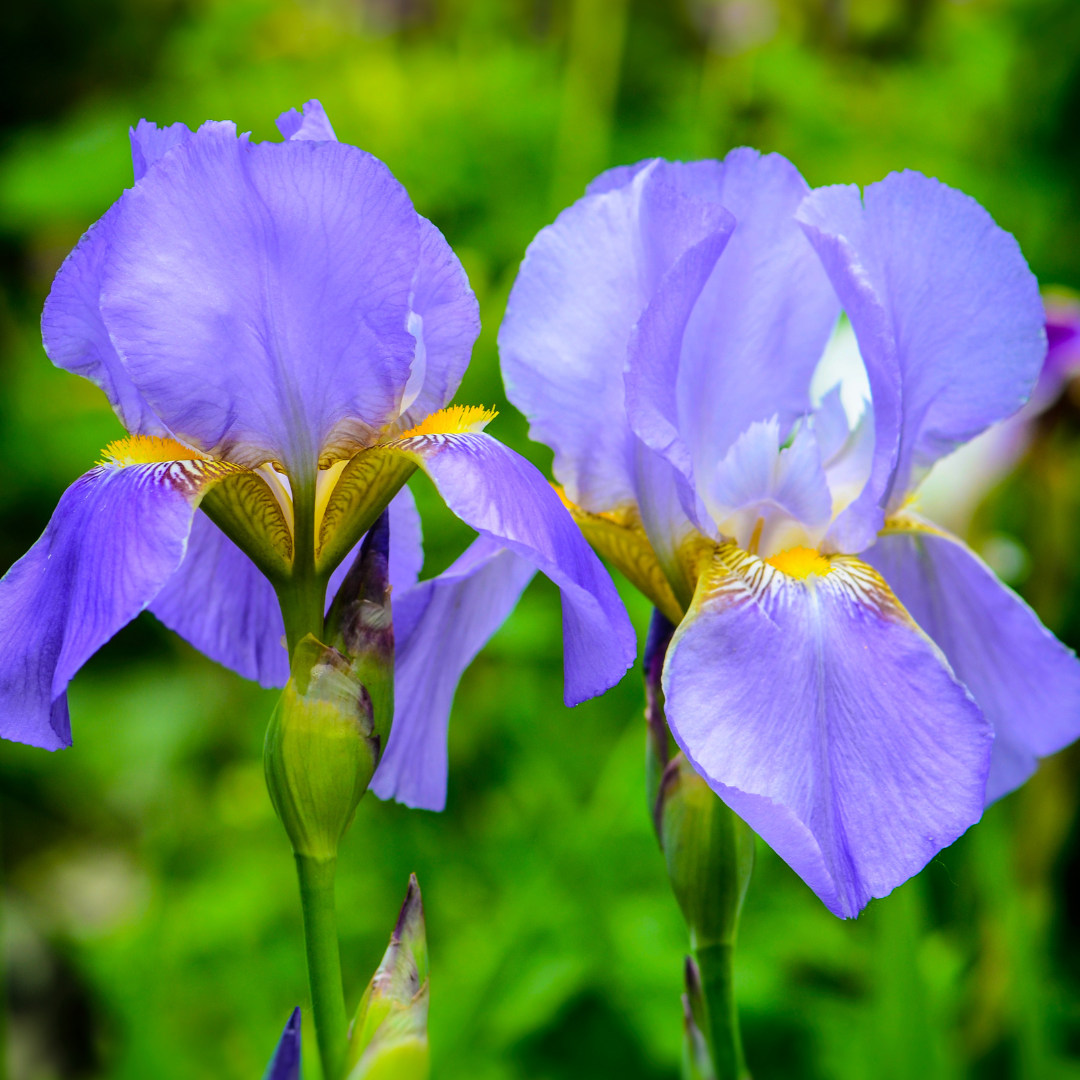
1. Bearded Iris (Iris Germanica Cultivars)
The bearded iris, an iconic flower well-known to almost everyone, gets its name not from its petals that face downward but from the fuzzy beard resembling a tongue jutting out.
Iris germanica cultivars are almost exclusively commercialized; the pure species is infrequently planted.
Bearded irises can be grown solely, and any colour scheme can be achieved in the garden; if you add some reblooming irises, you'll get a colour show all season.
The American Iris Society divides the Bearded iris into several categories, including tall bearded (tallest height is 27.5 inches) and intermediate bearded (16–27 inches).

2. Dwarf Bearded Iris (Iris Germanica Cultivars)
Iris germanica varieties that reach 8 to 15 inches in height are categorized as dwarf bearded iris. The small dwarfs, a different subgroup, don't get much taller than 8 inches. These tiny luminaries brightening your border and rock gardens are adorable; what's not to love?
With a small investment in only a few plants, you may quickly fill a large portion of the garden with dwarf bearded iris variations. Some growers say these irises may withstand shade better than their common counterparts.

3. Dwarf Crested Iris (Iris Cristata)
The native dwarf crested iris, Iris cristata, appeals particularly to forest gardeners since it thrives in partial shade.
Hummingbirds and bees will be drawn to the garden by the 6-inch-high flowers, which bloom from March through May.
To replicate the conditions of the pine groves where these plants naturally flourish, provide acidic soil. Like the bearded iris, this species reproduces using rhizomes that can separate.
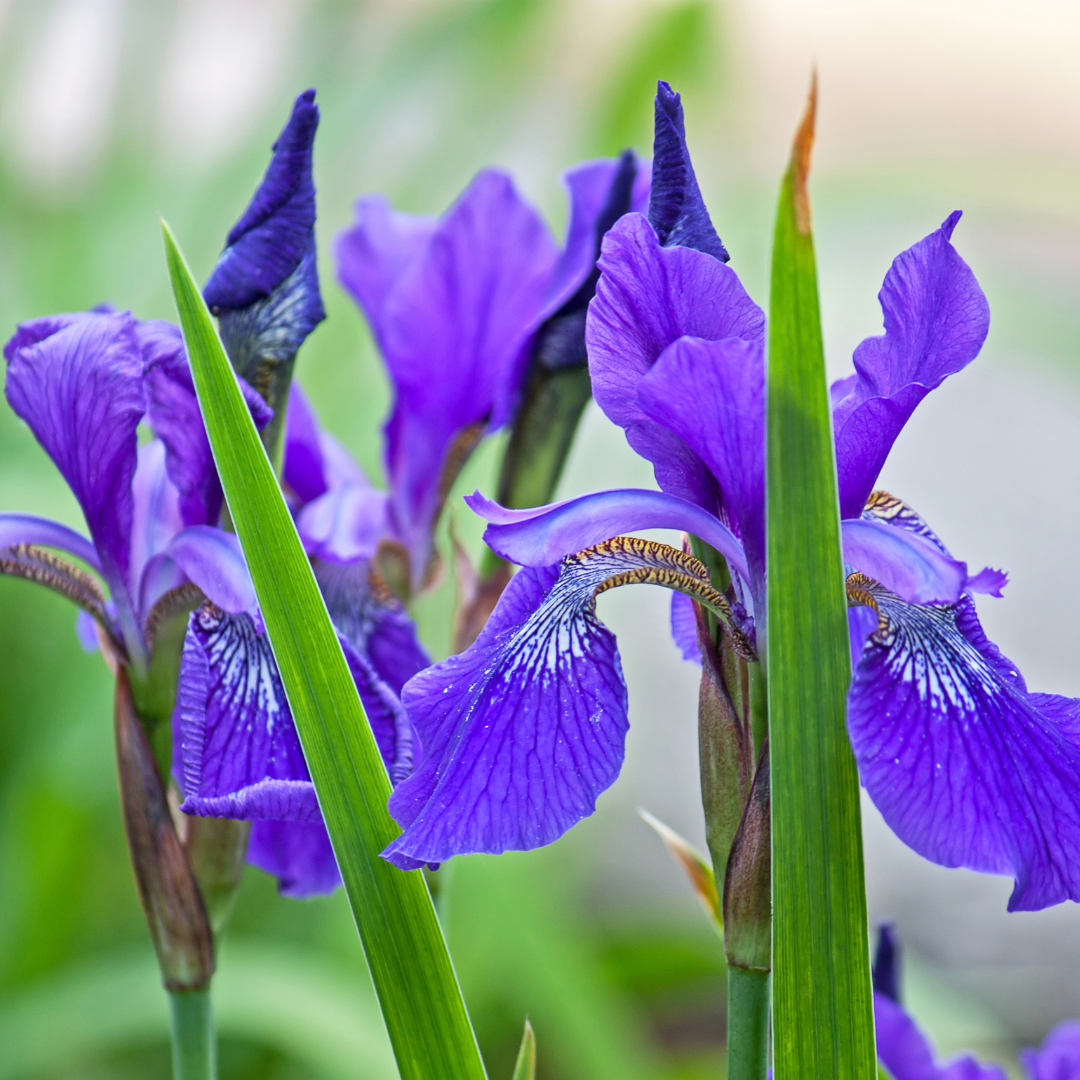
4. Species Irises (Iris spp.)
There are hundreds of species in the iris genus, many of which are restricted to limited geographic areas and are consequently rarely cultivated.
Small specialized nurseries or online plant forums where iris collectors cultivate colonies of unusual irises are good places to find these lesser-known types.
Gathering irises in the wild is not advisable because they can be at risk there. Try Iris missouriensis if you have trouble growing plants in a region with damp spring soils after the winter thaw.
The bamboo iris, also known as Iris confusa and preferred in frost-free climates with characteristics similar to azaleas, is a plant that Southern gardeners should try.

5. Dutch Iris (Iris Hollandica)
Dutch irises, like the cultivar ‘Apollo,' have tiny, straightforward flowers that gardeners frequently ignore, yet they make excellent companion plants.
Try planting them amid early salad greens to hide the iris' fading foliage after they finish blooming.
Typically, the flowers are white, blue, or yellow. These irises grow from bulbs rather than rhizomes. In the fall, firmly plant the bulbs. Since they could be endangered in the wild, collecting them is not advised.

6. Siberian Iris (Iris Sibirica)
The beardless division of the American Iris Society includes the Siberian iris, which lacks the shaggy, crooked “beards.”
These are hybrids, primarily descended from the Asian species I. sanguinea and I. sibirica, which have blue flowers.
Siberian irises are a great choice for novice iris gardeners. They offer a colour transition to summer perennials because they bloom a little later than bearded irises.
The Siberian iris maintains its exquisite waving foliage throughout the season, like an ornamental grass, in contrast to the bearded iris, whose foliage turns ragged and unattractive once the plants have bloomed.
When the center of the crown turns woody and unproductive, it is time to lift and divide the plant's extremely tough, fibrous rhizomes. Since they could be endangered in the wild, collecting them is not advised.

Steps To Grow Irises In Containers
The lavish, vibrant, and exquisitely marked flowers of irises are well-liked. The Iris genus includes various kinds you can cultivate in various environments, including banks, borders, pots, rockeries, pond edges, and moist soil.
Iris is the name of the Greek goddess of the rainbow, and iris flowers are known for their stunning array of hues.
The Fleur-de-Lis emblem, which represents iris flowers, has long been connected to French and English royalty. Irises grow quickly and are resilient when grown in the right environment.
Aside from the earliest bulbous varieties, like Iris reticulata, which bloom in the early spring, most iris flowers bloom throughout the summer.
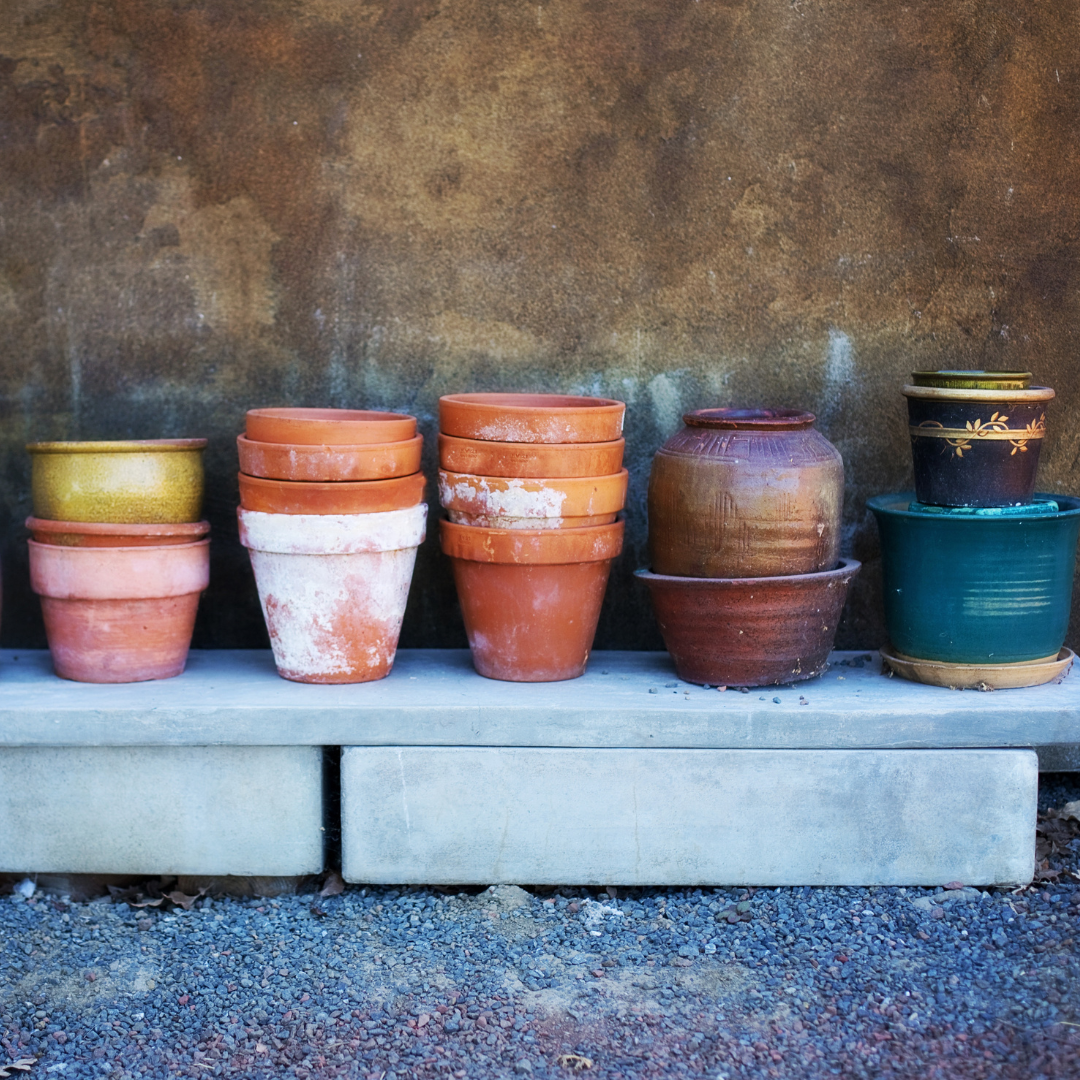
Choose The Right Container
Your choice of an iris involves some forward thought, unlike many more often potted plants. This is because most iris doesn't like to be bothered; therefore, the less frequently you need to re-pot them, the better.
A tall bearded iris requires a container with a minimum recommended diameter of 12 inches. In comparison, smaller iris variants like the reticulated iris (Iris reticulata) require a container with a diameter between 6 and 8 inches.
A good rule of thumb is to select a pot that is roughly the same size as how broad your iris will be after it forms clumps.
Doing this can keep the plant from getting root-bound before you divide it. As water is more constrained in a container than on the ground, ensure the pot has good drainage.
Pots made of ceramic or terra cotta can prevent water retention and offer a little more insulation in the winter.
Growers frequently use large plastic pots or metal tubs with drainage holes to plant numerous irises, although just about any good material will suffice.
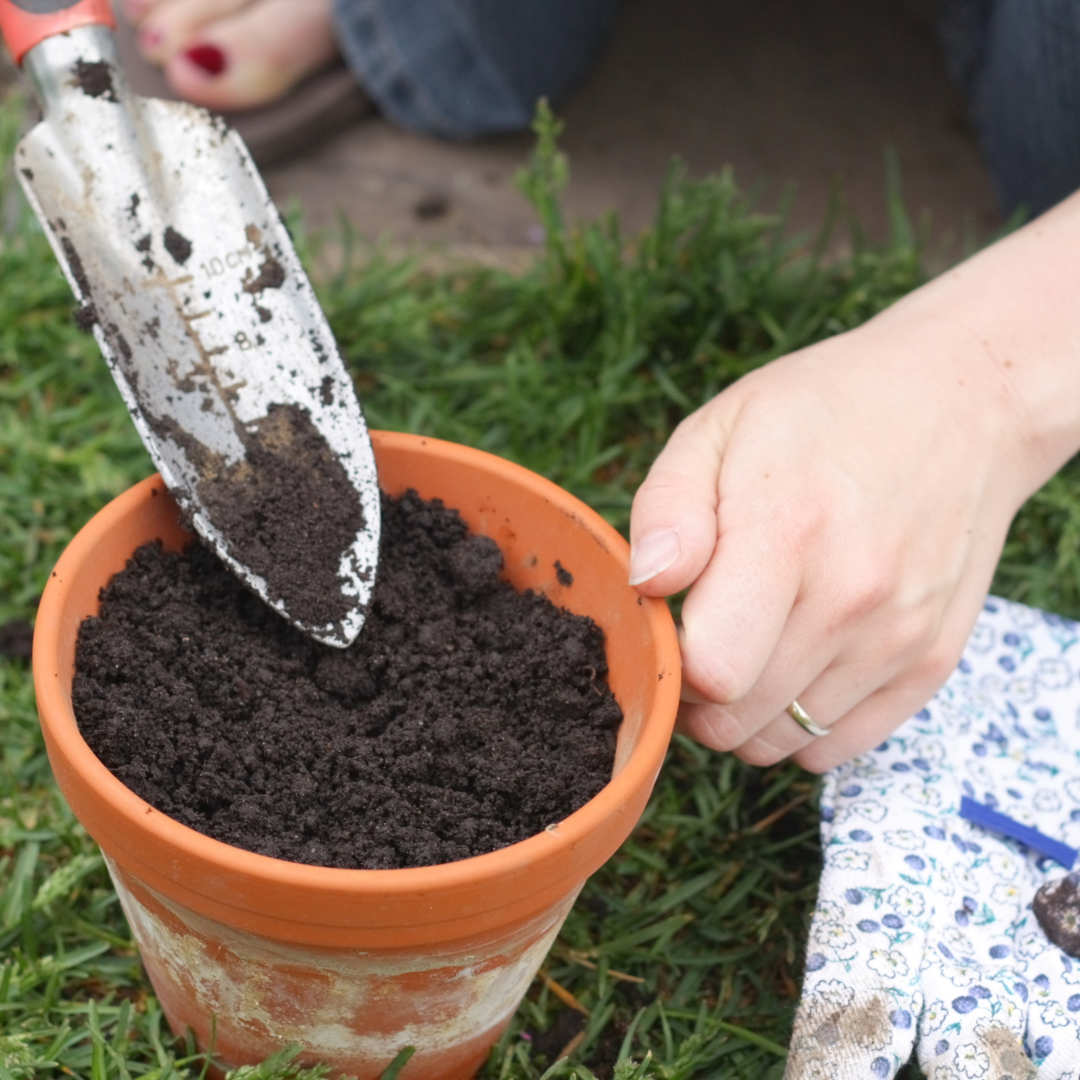
Soil Requirements
The general rule is that the earth should have a pH of 6.5 to 6.8, with the latter being best. It is simple enough to manufacture iris potting soil based on the requirements of a certain plant. Add a little peat moss a few months beforehand to raise the acidity.
However, buying organic potting mix with the right acidity and rich soil with sufficient drainage is typically the best option.
Perlite might be applied to enhance drainage further. Irises that are more adapted for poor soils can frequently utilize a less rich mix with a little coarse sand mixed in, whereas irises that require richer soil can benefit from adding a little extra organic compost.
Consider adding a base layer of gravel to the bottom of the pot for individuals who need better drainage to create a safe area while the water drains.
Sunlight Requirements
Find a location where they can get enough sunlight all year, or use grow lamps to supplement natural light because irises prefer to stay put.
Most iris species require 6 to 8 hours of direct sunlight each day. Your iris will prefer a dark space to overwinter in, but it will need sufficient lighting all winter if you want to force blooms.
The greatest option is a window that faces south without obstruction. Growers occasionally prefer to place their pots outside during the hot months and bring them inside for the winter to provide optimal illumination.
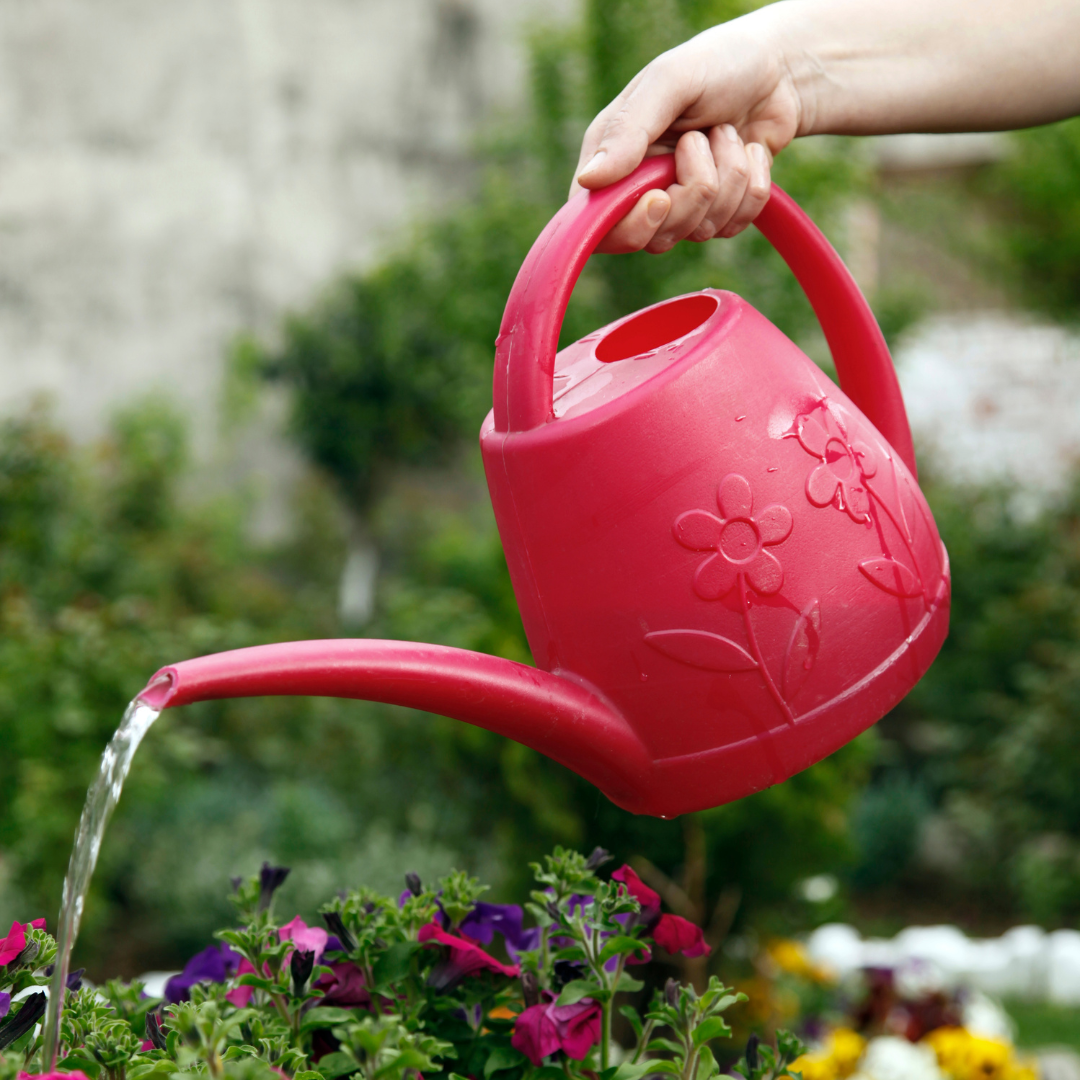
Watering Requirements
Irises dislike sitting in soggy soil, so ensure the dirt or compost drains well and don't overwater it. Before letting precipitation fall on newly planted rhizomes and bulbs, they should water in during an extended dry spell, giving close attention to containers and newly planted iris.
Temperature
Most iris varieties should be planted in late summer or early fall when overnight lows are consistently between 40° and 50°F (4° and 10°C) or higher.
Because of this, they have plenty of time to settle in before the upcoming winter. Because they tend to go dormant in early to mid-summer, tall bearded iris cultivars perform best when planted closer to fall.
If you have bare rhizomes or irises in a container from earlier in the year, plant them as soon as possible. It is preferable to plant them now rather than wait for the “perfect” moment.

Fertilizer Requirements
A balanced liquid houseplant fertilizer can do wonders for your potted iris. The amount and frequency of feeding may need to change depending on the specific plant.
Yellow flags and species comparable to them frequently don't need to be fed at least once at the start of the growing season. Add some bone meal to the potting soil in the fall.
Planting
Rhizomes (the thick stems) should be planted bare-root, horizontally, with the top exposed and the roots only buried. Plant the rhizome just below the soil's surface in regions where the summers are very hot.
Create a 4-inch deep by a 10-inch wide hole. The rhizome should be positioned on a ridge of soil with its roots spread out on both sides. Leave some of the rhizome and the leaf exposed and carefully fill and compact the hole.
Depending on the size of the fully developed plant, plant either alone or in groups of three spaced 1 to 2 feet apart.
Before planting, soak the rhizomes of the Siberian iris in the water for an entire night. Then, place them 2 feet apart, 1 inch deep (or 2 inches if the soil is sandy).
They will group over several years and divide as the vigour and size of the flowers deteriorate. Mulch should not be used around the rhizome as this could promote rot. Thoroughly water.
Pruning
Deadhead iris flowers as they wilt by cutting the stems off the ground. At this point, leave the rest of the foliage unharmed.
Ensuring the rhizomes' continuing growth and health in preparation for the change of the following season will help.
Depending on your growing zone, irises in containers require extra winter care. However, most sources advise using thick mulching to safeguard specimens in pots.
Container iris plants will grow back season after season with the right care. Rhizomes will grow every summer. Therefore, plants may need to be divided and repotted after a while.
Pests & Diseases Of Irises
Leaf spot is a fungus that causes brown spots and patches on the leaves that converge. Remove any broken leaves, and get rid of any dead stuff that's under the plants. Irises are susceptible to the fungus that causes rhizome rot or bulb rot.
Before planting, you might detect mushy areas, slimy parts, or an unpleasant odour. The plant may collapse if it has already been planted, and the leaves may start to yellow or lose their colour from the bottom up.
The impacted rhizomes (bearded irises) can be removed from the affected areas and replanted in a different location.
However, because irises are so inexpensive in the long term and come back every year, you might decide to do so.
The impacted rhizomes (bearded irises) can be removed from the affected areas and replanted in a different location.
It's preferable to start over with healthy rhizomes because irises are so cost-effective in the long run (they come back year after year). If it's a bulb, take it out and throw it away.
Winter Care
Cut all leaves off at the container level after a brief freeze. Containers can stay in the pool in locations with moderate winters (USDA Zone 8–9 for Spec-X and Iris laevigata) (Japanese iris, zone 9).
Lift the containers out of the flooding pools in colder areas and bury them up to their rims in a prepared bed with a thick layer of mulch.
Return the containers to the flooding pool in the spring, fertilizing once new growth begins to show.
Lift the plants, divide them, and replant them after flowering. Irises can bloom in the winter or wither away for the season, depending on the species.
Consider the winter maintenance requirements for your plant in a garden and apply those guidelines to the potted plant.
Use the adaptable indoor climate to offer a plant's required light and temperatures if it can be forced or has a winter bloomer.

Conclusion
Growing irises in containers can be a great way to add colour and interest to your patio, balcony, or deck.
By following the steps outlined in this article, you can successfully grow irises in containers and enjoy their blooms year after year.
Remember to choose the right container size, use well-draining soil, and provide ample sunlight and water.
Also, select the right iris varieties for your container and consider adding complementary plants to create a stunning display.
With a little care and attention, your container-grown irises will thrive and provide beautiful blooms for years.
I trust you enjoyed this article on the Best Steps To Grow Irises In Containers. Please stay tuned for more blog posts to come shortly. Take care!
JeannetteZ
>>>Please click here to read my all-inclusive article about Container Gardening<<<
>>>Are you interested in homegrown herbs and medicine? Please click here to find out more about it!<<<
Your Opinion Is Important To Me
Thoughts? Ideas? Questions? I would love to hear from you. Please leave your questions, experience, and remarks about the article the Best Steps To Grow Irises In Containers in the comments below. You can also reach me by email at Jeannette@Close-To-Nature.org.
Disclosure
This post may contain affiliate links. As an Amazon Associate and other affiliate programs, I earn from qualifying purchases at no extra cost to you. Please read my full affiliate disclosure.
You might also enjoy these blog posts:
Best Steps To Grow Primulas In Containers
Best Steps To Grow Heucheras In Containers
Best Steps To Grow Ivy In Containers
Best Plants For Winter Hanging Baskets
Best Fall Planter Ideas For Your Garden

